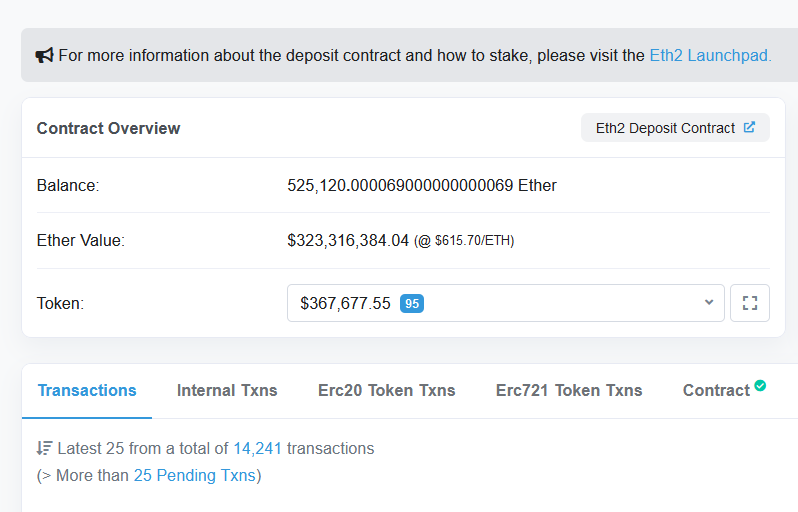QUOTE(vanitas @ Feb 5 2021, 12:03 PM)
Perhaps AAVE coin is limited.
Anyway, the following comment from Reddit captured my mind about Defi especially lending and borrowing:
"Picture this. I have 1 eth and use it as collateral to get 1000 DAO (very low interest rate when borrowing it) . I exchange that to get 0.75 eth. Now I use that as collateral to get 750 DAO.
Overall I now have 1.75eth under my name used as collateral and it's worth 1750. I can do this so many times I end up with 7 or a little more eth depending on what I'm borrowing.
This sort of leverage lets me create demand for eth that isn't there. If I'm a big enough fish, I can make the price go up. With these low interest rates for borrowing sertain currencies I don't need the price to go up by loads. Even 4% can do.
This is one thing. The other which I find more concerning is that I can lend USDC for something like 7% interest. This shows that there is a great demand for borrowing USDC but when you look at it, almost no one is spending that USDC to pay bills. They are giving eth as collateral for example. Imagine now that the price of eth drops down fast and the protocol that is keeping it as collateral tries to sell it to buy back the USDC which you lent. When it does that it makes the price of eth to drop down further, making other protocols to do the same. And at some point the eth doesn't cover the USDC borrowed. The people who's USDC isn't covered will get fucked.
Perhaps in not understanding something. Explain to me if that's the case😁"
The first part you're talking about is a very normal market activity - It's call leveraging long. Except that with the described DeFi protocol you cannot borrow more than what you've supplied and subsequently your leverage is limited (unlike in exchanges which offers 10x, 20x, 100x etc).
Well ok, caveat being the protocol Andre is working on which allows one to buy on margin, but I haven't checked it out myself (sorry Andre):
https://twitter.com/AndreCronjeTech/status/...776635744178176ADD: dYdX allows you to trade on margin too. Totally forgotten about them lol.
The second part you're describing is a protocol risk, and in worst case scenario is considered a black swan event. Different protocols takes on different risk parameters to prevent from ever reaching this black swan event, e.g. by ensuring collateral ratio being high enough, by ensuring liquidation of vaults/positions are as simple + rewarding as possible, etc and in the case where there is an actual black swan event, different protocols employ different backstops, e.g. Maker token holders take on the (pricing) risk as MKR is liquidated to ensure the system is no longer undercollaterised. And that had happened before (https://blog.makerdao.com/mkr-debt-auction-announcement-and-details/).
This post has been edited by Enigmatic: Feb 5 2021, 12:51 PM 

 Nov 23 2020, 12:58 PM
Nov 23 2020, 12:58 PM

 Quote
Quote

 0.0856sec
0.0856sec
 0.21
0.21
 7 queries
7 queries
 GZIP Disabled
GZIP Disabled